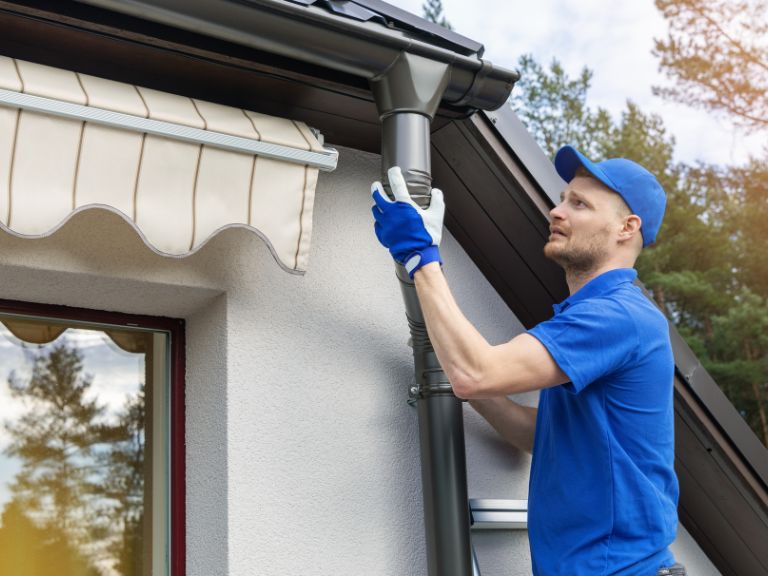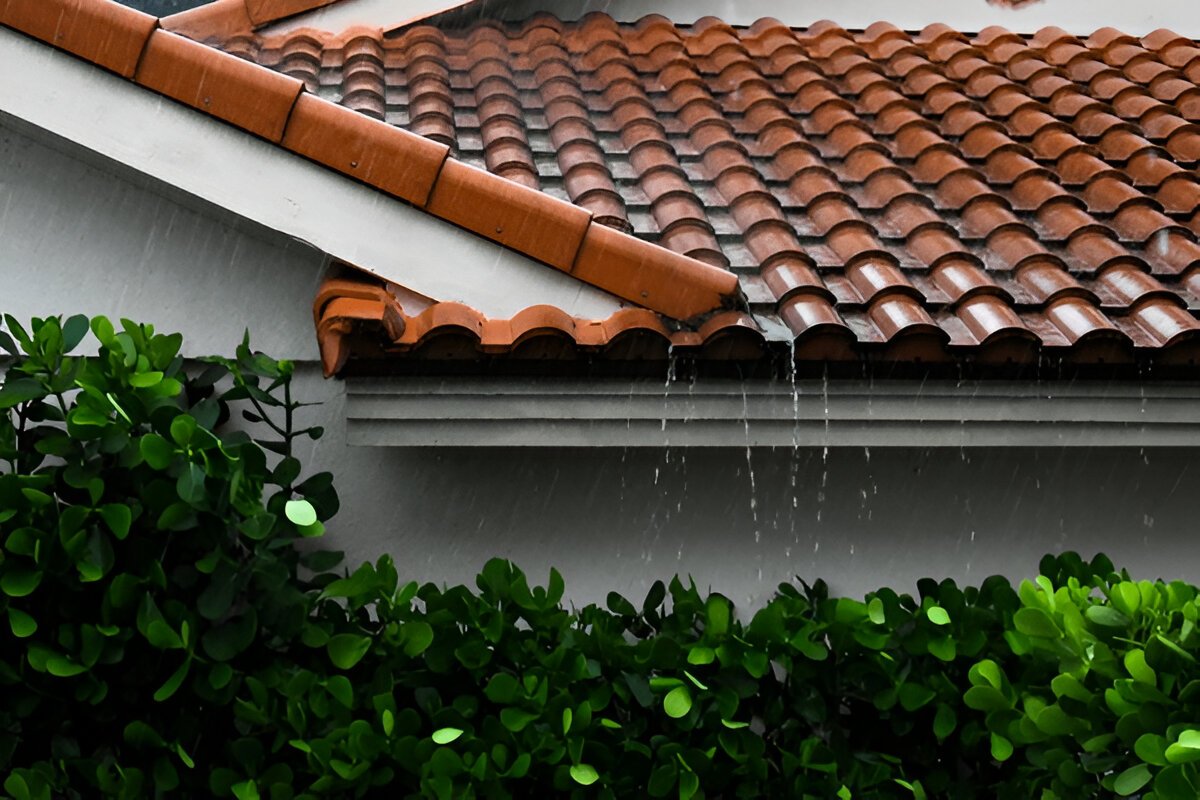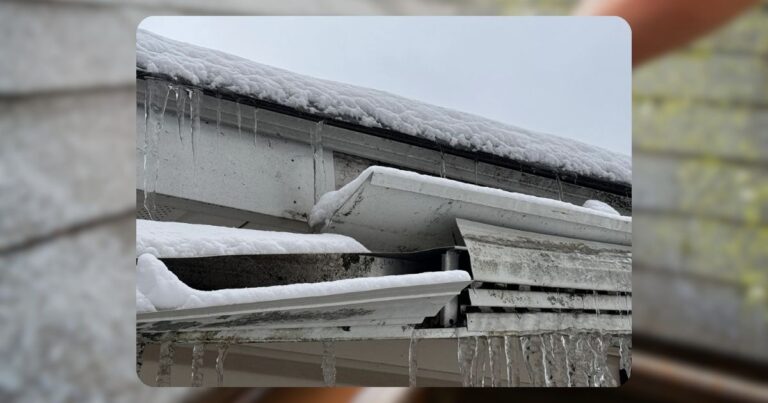Gutters don’t last forever, especially in a place like Hartford. Between snow, ice, and pounding rain, your gutter system works overtime just to keep water out of your basement and off your siding. That constant pressure wears them down fast, even if they look fine from the curb.
Most homeowners don’t realize gutters have a natural lifespan, usually about 15 years. After that, even well-installed systems start to pull away, leak at the seams, or clog more often. It’s not just about age, it’s about what that wear means for your home.
So why do Hartford homeowners replace theirs like clockwork? Because waiting too long can turn a small problem into a soaked foundation, mold inside the walls, or a repair bill that makes you wish you’d acted sooner.
Now, here’s the good part: swapping your gutters at the right time doesn’t just protect your home; it can actually save you money in the long run. Let’s break down why the 15-year mark matters and why it’s smart to plan.
The 15-Year Rule: Where It Comes From and Why It Matters
What Determines a Gutter’s Lifespan?
Most gutters aren’t built to last forever. In fact, 15 years is often the limit, especially in Hartford, where the weather gives them a workout every season.
Here’s the quick breakdown:
- Aluminum gutters (the most common) last around 15–20 years.
- Vinyl gutters tend to wear out sooner—10 to 15 years, especially in areas with cold winters.
- Galvanized steel lasts about 15–20 years, but rust shows up early if it’s not cleaned often.
- Copper gutters are the outlier—they can last 40–50 years, but they’re pricey and rare in standard homes.
But even if the material holds up, Hartford’s climate speeds up wear. Heavy snow, ice buildup, and spring rains cause sagging, joint leaks, and slow drainage. And if trees hang over your roof, leaves and debris push that timeline even faster.
Let me explain—gutters don’t usually fail all at once. It’s a slow fade, and by year 12 or 13, small problems start creeping in. That’s why the 15-year mark isn’t random—it’s when enough wear adds up to put your home at risk.
Signs That Your Gutters Have Reached Their Limit
So, how do you know your gutters are at the end of their run?
Look out for these signs:
- Rust or corrosion at the seams or bottom
- Sagging sections that dip or pull away from the fascia
- Leaks during rainfall—even small drips are a warning
- Peeling paint or water stains on siding near the gutter line
- Overflow from clean-looking gutters (a sign of poor slope or hidden clogs)
And here’s something most people miss: if your downspouts are clear but water still spills over the sides, your gutters may be too shallow or warped to handle heavy flow. That’s a red flag—especially during Hartford’s spring storms.
Now here’s the good part: Catch these signs early, and you might save your home from water damage and your wallet from a big repair bill.
So read on—we’re about to dive into why Hartford’s weather makes all this worse, and why waiting too long can cost you more than you think.

Why Hartford Homes Are Especially Vulnerable
Unique Climate Pressures
Gutters in Hartford deal with more than just rain—they take a beating year-round. Winters bring heavy snow and ice, which sit in gutters and weigh them down. When the sun comes out, that snow melts—then freezes again overnight. This freeze-thaw cycle pulls gutters loose and cracks the seams over time.
Then comes spring. Hartford gets soaked, with fast, heavy rains that test your system’s capacity. If your gutters can’t keep up, water spills over, pools at the base of your home, and eats away at your foundation.
Let me explain—storms in this area aren’t just “bad weather.” Nor’easters roll in with wind, sleet, and days of rain. If your gutters already have small cracks or loose hangers, a Nor’easter can turn that into a full-blown failure.
Tree Coverage and Debris Buildup
Now add trees to the mix—especially in Hartford’s older, suburban neighborhoods. Fall leaves fill gutters fast. When they pile up, they block water flow, forcing rain to pour over the edge or back into your roofline.
Even worse, wet leaves stick. They hold moisture, speed up rust, and create the perfect spot for ice to form in winter. If your house sits near maples, oaks, or pines, your gutters work harder and wear out faster.
So read on—we’ll look at what happens when gutters finally give out and why fixing damage is much more expensive than replacing them at the right time.
The Hidden Costs of Waiting Too Long
What Happens When Gutters Fail
Gutters don’t just carry water—they protect your whole home from slow, expensive damage. When they stop working, problems stack up fast.
Water starts to overflow, runs down your siding, and pools around your foundation. That may not look serious at first, but over time it seeps in—cracking concrete, soaking basements, and even shifting your home’s structure.
Let me explain—gutters are like the roof’s pressure relief valve. If they’re clogged, cracked, or falling apart, that pressure finds another way out—and usually it’s through your walls or windows.
You might notice mold in the basement, peeling paint, or soft spots near your roofline. Those are warning signs, not small repairs. And the longer you wait, the more expensive it gets.
Real Costs vs. Preventive Investment
Here’s the truth: waiting too long can cost thousands more than replacing the gutters on time.
- A basic gutter replacement? Around $1,500 to $3,000 for an average Hartford home.
- But foundation repair after years of water damage? That can hit $8,000 to $15,000—or more.
- Add mold cleanup or basement waterproofing, and the numbers jump fast.
Now here’s the good part: replacing gutters before they fail is a one-time fix. There’s no patchwork, no emergencies, just peace of mind.
So read on—we’ll show you what to check at the 15-year mark and how a simple upgrade now can save you from costly surprises later.

What Homeowners Should Do at the 15-Year Mark
Start with a Simple Inspection
If your gutters are pushing 15 years, don’t wait for something to break. Walk around your home and check for signs of wear—loose brackets, rust spots, leaks, or sections pulling away from the fascia. Do this after a good rain if possible. It’ll show you how well they’re draining.
Take a quick peek inside, too. Even a small pile of leaves or standing water means the slope may be off or debris is blocking the flow. And don’t forget the downspouts—water should come out fast, not trickle.
Let me explain—gutters don’t always look bad from the ground, but that doesn’t mean they’re working right. If you’re unsure or don’t want to climb a ladder, bring in a local pro. It’s a small cost that can catch big problems early.
Look Into Smart Upgrades
If you’re ready to replace, it’s a good time to think about upgrades. Seamless aluminum gutters are a solid choice for Hartford homes. They handle snow, resist leaks, and last longer than older sectional systems.
You can also add gutter guards to block leaves and reduce cleaning time. If your current setup sends water too close to the foundation, ask about extended downspouts or splash blocks to move it further away.
Now here comes the good part: most of these upgrades don’t add much to the total cost, but they can add years to the system’s life and help prevent water damage long term.
So read on—next, we’ll show you how to pick the right installer and avoid common mistakes homeowners make during replacement.
What to Look for in a Local Installer
Picking the right installer isn’t just about price—it’s about peace of mind. Start with the basics: make sure they’re licensed, insured, and familiar with Hartford’s local codes. Gutter work might seem simple, but an improper slope or missed fastening point can cause major water damage later.
Don’t skip the research. Look at real reviews from Hartford homeowners. Scan their before-and-after photos—they’ll show you more than any sales pitch. And if they can’t show past jobs in your area, that’s a red flag.
Let me explain—local experience matters. An installer who’s worked through Hartford’s snow seasons knows how to anchor gutters that won’t rip off under ice weight.
Choosing the Right Materials for Long-Term Value
Not all gutters are built the same. In Connecticut’s climate, aluminum is a top pick—it’s affordable, doesn’t rust, and holds up well through snow and rain. Vinyl is cheaper but becomes brittle in freezing temperatures and warps under heat. Steel is stronger, but once rust sets in, it spreads fast unless you stay on top of maintenance.
If you want something longer-lasting, copper can go 40+ years—but expect to pay more up front.
Now, here comes the good part: the right material saves you time and money over the years. There is no constant patching, fewer cleanups, and no stress every time a storm rolls in.
Conclusion: Don’t Wait Until Your Gutters Tell You It’s Too Late
Gutters don’t last forever, and in Hartford, they rarely hit year 20 without trouble. By the time problems show up, it’s often too late to avoid the damage. That’s why smart homeowners plan for replacement at the 15-year mark—not because the system looks bad, but because they know what’s coming if they don’t.
Replacing your gutters on time isn’t about spending money—it’s about saving your home from bigger repairs, and your budget from surprise bills. And with the right installer and materials, it’s a simple upgrade that pays off for years.
So if your gutters are aging, sagging, or just overdue for a second look, take the hint. Get ahead of the next storm, not caught in it.




